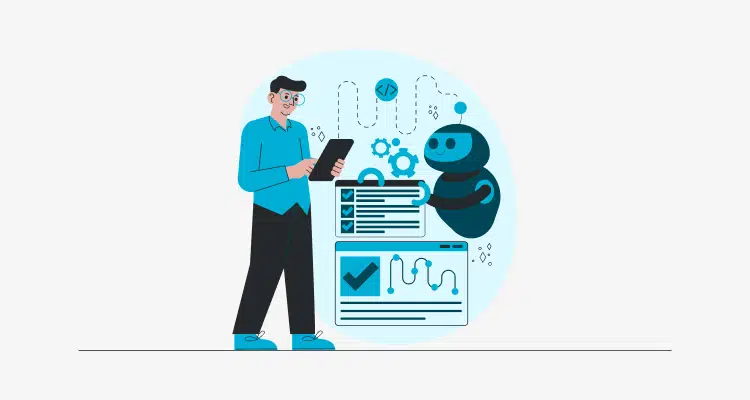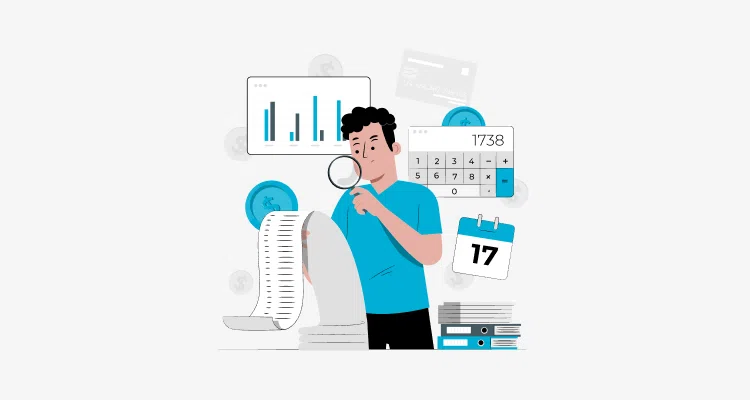Did you know that there are many testing methods in software development? Each types of QA testing has a specific purpose.
It includes scrutinizing tiny parts of code and ensuring that whole applications run well on many devices.
These testing methodologies have particular goals. They evaluate specific applications or use tactics.
Their goals, applications, or tactics are used to classify them. Knowing this spectrum is more important because it helps us make a complete testing strategy.
This strategy covers all aspects of software quality. In this blog, we’ll explore various QA testing methodologies.
They apply to web and mobile applications. We’ll offer insights into manual and automated testing.

What is QA Software Testing?
QA software testing ensures that the software meets the right quality standards. It’s like giving the software a thorough check-up to catch any problems or inconsistencies.
There are different types of tests. Functional testing, for example, checks the software’s main features.
There is also regression testing. It makes sure updates don’t mess up what’s already working.
Usability QA testing checks how easy it is for users to navigate the software.
There is also performance testing. It measures how well the software handles different loads.
QA isn’t just about finding bugs. It’s also about setting and keeping standards.
These standards ensure products are reliable.
A good QA testing system boosts customer trust, makes a company more credible, and helps things run smoothly and quickly.
It’s a big deal in many industries, and organizations often follow standards like ISO 9000 to ensure their QA practices are up to scratch.
QA started in manufacturing but is now a crucial part of software development and many other fields.
When should you use automated testing vs. manual testing?
Deciding between automated and manual QA testing depends on many factors, including the project’s nature, timeline, budget, and specific testing needs.
Automated QA testing is great for repetitive tasks. Running the same tests often is an example. It is also common in regression testing and provides benefits.
Automated testing cuts testing time and effort for big projects with many features. It ensure consistency in test execution, reducing the chances of human error. Automated QA testing is excellent for handling complex tests.
These tests may be complex to replicate by hand. However, they can detect issues early in the development cycle, allowing for prompt resolution.
Manual QA testing is valuable for exploratory testing. Testers explore the software to find unexpected issues or behaviors.
Manual testing is suitable for evaluating the user experience. Human testers can give subjective feedback on usability, intuitiveness, and satisfaction.
Test cases need to be more well-defined and change rapidly in these situations.
Manual QA testing offers flexibility and adaptability. Testers often use manual testing for user interface testing.
Testers visually inspect elements and interactions. They do this to ensure they meet design and usability requirements.
Manual testing may be cheaper at first for small projects or those with limited resources. This is especially true if automation needs a significant upfront investment.
Using both automated and manual testing is often best. Automated QA testing methodologies can cut repetitive tasks.
It provides quick feedback on specific functions. Manual testing offers the human touch.
This is needed for exploratory testing, user experience assessment, and handling unpredictable scenarios.
The Different Types of QA Software Testing
Different types of QA testing methodologies are used during software development. High-quality products not only attract customers but also make your business successful.
Here’s a comprehensive list of the various types of QA software testing that you should be aware of when developing and deploying a web or mobile application.
1. Unit Testing
One of the most critical phases of developing software is unit testing, which developers perform. It involves inspecting individual units of code alone.
This is to verify that they work accurately as intended. These units could represent functions, methods, or classes within the codebase.
The importance of unit testing cannot be overstated. It plays a crucial role in finding and fixing bugs early in development.
Developers independently verify each unit’s functionality using this method. It gives them confidence in the reliability of the software’s higher-level features.
For example, suppose a developer adds a new function to an e-commerce application.
The function calculates the total price. To verify the function, we need unit tests. The tests will check that it computes the total price accurately and use various inputs, like taxes and discounts.
Yes, JUnit and NUnit make it possible to automate unit testing. These frameworks make it easier to create and run unit tests.
They help find errors earlier and use better software. JUnit is a trendy testing framework among Java developers.
It is made for writing and running unit tests in Java. It ensures code accuracy and reliability.
Developers working in languages like C# may find NUnit a good alternative. It is made for the .NET framework. It includes many features.
They make it easier to create and run unit tests in .NET languages. They support making reliable software and improving testing.
2. Component Testing
Testing software components is essential because it evaluates separate units of code, which could include functions, classes, and methods.
The main goal is to ensure each unit does its tasks correctly. Component testing is essential in the software development lifecycle.
It comes between unit testing, which checks functions, and system testing, which evaluates the whole app.
During component testing, testers thoroughly inspect each component. They do this to find and fix any problems. The goal is to ensure these components work seamlessly with the rest of the software system.
For example, component testing for a web application involves looking at how a login component functions. They test every input element.
This includes passwords, usernames, and submit button clicks. This careful approach ensures each part works perfectly. Then, they’re added to the login system.
You can automate component testing using special tools and frameworks. They make the process faster and more efficient for running test cases on code components.
One prominent tool is Testigama, an open-source solution widely used to automate web application testing.
Testigama allows testers to script test cases and interact with specific code components, such as web forms and UI elements, allowing for more thorough component testing.
Furthermore, while JUnit is commonly associated with unit testing, it can also be helpful for component testing. JUnit allows testers to evaluate specific Java classes and methods alone.
3. Integration Testing
Integration testing is crucial for software. It involves examining the interactions between different modules in an application, a key aspect of QA testing types.
Its main goal is to confirm that these parts work together well and that they should deliver the desired outcomes when combined.
We identify problems like data flow discrepancies, communication errors, and inconsistent interfaces through testing.
They can occur during the integration of software system components. We find them by focusing on the integration points.
Integration testing comes after unit testing, which involves testing individual parts.
Integration testing comes before system testing, which evaluates the whole system.
For example, take an e-commerce website. Integration testing ensures that the shopping cart and the payment gateway work smoothly.
These tests may include adding items to the cart and starting the checkout, as well as verifying that payments are handled correctly.
They also include showing the payments in the order status. The testing procedure is thorough. It guarantees the function and trustworthiness of the system’s parts.

Yes, you can do this with testing frameworks and special tools. These tools make it easier to run tests, which cover interactions between components.
Postman, a popular tool for API testing, is one example of such a tool. Postman automates API integration testing.
It provides an easy interface for creating and running test suites. The software system’s multiple components can be efficiently validated through its usefulness.
Testsigma also distinguishes itself as an AI-driven test automation tool. It streamlines the process of automating end-to-end and integration testing.
Testers can automate the testing of integrated software with Testsigma. It uses AI to streamline the creation and running of test scripts. This approach ensures thorough testing coverage and increases the integrated system’s reliability.
4. End-to-End Testing
End-to-end testing, called E2E testing, is a thorough form of quality assurance (QA) testing.
It involves thoroughly examining an application’s functionality from start to finish. The main goal is to make sure all system parts work together well.
This testing method involves checking the whole application or website. It validates its performance from the end user’s perspective. This includes rating different parts.
For example, the UI, network, databases, and backend. End-to-end testing focuses on users. It confirms the system’s overall behavior.
This includes its functionality, security, durability, and dependability. End-to-end testing comes after integration testing. It comes before acceptance testing in software testing.
End-to-end testing in a web application entails evaluating the full user journey, from the first login to the final checkout.
For example, E2E testing ensures that users can log in. You can then browse products, add items to your cart, proceed to checkout, and complete the purchase.
You can do all of this without encountering errors or disruptions. This thorough testing approach ensures a smooth user experience at all stages of using the application.
Absolutely! End-to-end testing can be automated. This has significant benefits for efficiency and dependability.
Automated tests simulate real users. They interact with an application. The tests ensure its functionality. It identifies potential problems well.
Appium distinguishes itself as an open-source automation solution intended exclusively for mobile applications.
It supports Android, iOS, and Windows apps. This makes it great for testing on many mobile devices and platforms.
Appium’s robust features make testing mobile applications more accurate and efficient by streamlining the automation of tests.
In addition, Testsigma is a cloud-based tool for test automation. Its codeless method transforms the process. Testsigma makes end-to-end testing easy to create and maintain.
It works for both technical and non-technical team members by eliminating the need for manual coding.
Its accessibility improves quality assurance, speeds up testing for web apps, mobile apps, and APIs, ensures collaboration, and boosts productivity.
5. Performance Testing
Performance testing is important in types of QA testing methodologies. It assesses a system’s speed, responsiveness, stability, and performance.
Performance testing measures how well an application performs. It does this under various conditions.
Performance testing is an important non-functional testing type. It finds and fixes performance bottlenecks.
These may arise in application load increases. No company wants to deliver a product with slow response times or frequent outages. It includes some different tests, like:
Load testing: IT tests application stability and response time under expected user loads.
Stress Testing: Tests application stability and response time under higher-than-expected user loads.
Scalability Testing: Tests application stability and response time under increasing user loads.
Volume Testing (Flood Testing): Tests the database’s capacity to handle a large volume of data.
Endurance Testing (Soak Testing): Tests application stability and response time under sustained loads over an extended period.
Performance testing detects all system bottlenecks and helps to optimize performance. It guarantees that the program can successfully manage the anticipated workload.
Ready to optimize your testing?
Explore the 12 types of testing to fortify your software quality. Have questions or need assistance?
Absolutely! Apache JMeter, an open-source program designed for load and performance testing, is a noteworthy tool.
Testing teams can evaluate web applications, APIs, and other systems. They do this by using JMeter to build thorough test plans.
These plans replicate different user scenarios. It is a well-liked option for businesses looking to automate their performance testing procedures efficiently because of its versatility and feature set.
In addition, LoadRunner is a unique, highly automated performance testing tool. It supports many protocols and technologies for simulating realistic user loads.
This makes it great for enterprise-level performance testing.
If you want to automate performance testing and ensure the best performance of your applications under many conditions, choose LoadRunner.
6. Regression Testing
One of the most essential parts of software testing is regression testing. It verifies that an application will work after new updates or changes.
As software moves through multiple upgrades, it is expected to introduce logical or user interface changes. However, these adjustments unintentionally interfere with already-existing features, which could result in flaws or problems.
The main goal of regression testing is to find and fix such issues. It does this through a series of tests.
The designers have created the tests to recheck parts of the application. The QA team can find and fix regressions or surprises from the updates.
They do this by being proactive. This approach ensures the software stays stable and reliable.
Successful automation of regression testing can save a lot of time and guarantee that existing functionality will be recovered when code changes are made.
Automated regression testing tools allow for rapid application retesting to detect new defects.
Testsigma is a versatile test automation tool that supports various applications, including desktop, web, and mobile platforms.
Testers can use Testsigma to automate regression testing across multiple technologies and platforms, streamlining the testing process and increasing efficiency.
7. Sanity/Smoke Testing
Smoke testing and sanity testing are similar types of QA and software testing. They aim to quickly check an application’s essential functions and help determine if further testing is necessary.
Smoke/Sanity testing ensures that important system functionalities operate at a high level of efficiency.
Testers can use Testsigma to automate regression testing across multiple technologies and platforms, streamlining the testing process and increasing efficiency.
For example, you should test the policies for buying, adding pets, and making quotes. These are critical tests for a pet insurance website.
Before comprehensive testing, do smoke/Sanity testing. It ensures these features work as intended.
Teams can configure Jenkins, a powerful open-source automation server, to run automated sanity/smoke tests whenever code changes occur.
Its highly customizable design allows seamless integration into the development pipeline, continuous integration, and automated testing.
Jenkins enables developers to automate sanity checks for each code update, providing real-time feedback on the software build’s stability and functionality.
Travis CI, on the other hand, is a cloud-based continuous integration platform built specifically to automate sanity/smoke testing in the development pipeline.
It seamlessly integrates with version control systems such as GitHub and automatically runs predefined tests whenever code is updated.
Travis CI automates the sanity test process, ensuring critical functionalities are verified quickly and consistently with each code change.
8. System Testing
System testing is vital in the software testing process, encompassing validation of a fully integrated system among various types of testing within QA.
They are designed to thoroughly examine a working software system, seeking and fixing any bugs or discrepancies with the specifications.
System testing evaluates a system’s behavior and performance by examining how its parts and subparts interact.
This complete evaluation ensures that the system works as intended. It meets both functional and non-functional requirements.
System testing often happens after integration testing. During integration testing, we merge and test individual components as a whole. System testing comes before user acceptability testing.
In user acceptability testing, end users review the system to check it fulfills their needs and expectations.
Want to Automate Your Business Process With a Software Solution?
Zennaxx, a leading software development firm in Canada, has delivered 700+ bespoke solutions spanning various industries.
Automating system testing effectively provides numerous benefits such as efficiency, repeatability, and accuracy.
Automated system testing ensures the integrated software runs smoothly.
It also ensures it consistently meets the requirements. Testsigma is a notable test automation tool. It is cloud-based and automates system testing without code.
Teams can use Testsigma to simplify creating, maintaining, and executing tests for web and mobile apps. Its simple interface makes it usable by non-technical team members.
It promotes collaboration and streamlines testing. Cypress is another robust automation tool. It was made specifically for end-to-end testing of web applications. Testers can confirm that parts of the system work together.
9. User Acceptance Testing
User Acceptance Testing (UAT) is the final phase of software testing, which end users or client representatives carry out. The primary goal is determining whether the software meets their needs and is ready for production deployment.
UAT is critical in the software development cycle. It checks function and how well the software meets user needs.
For a banking application, user acceptance testing involves having real bank customers test the software.
They do this to ensure that transactions are handled correctly and securely. Users perform tasks like bill payments, fund transfers, and balance checks to ensure the system works as they expect.
User Acceptance Testing (UAT) is mainly manual. End users or client representatives do it. They check that the software meets their needs and expectations.
Automation might be complex in UAT due to its user-centric design and the need for human judgment. However, some tools can help with specific procedures.
For instance, TestRail is a test case management application that simplifies the UAT procedure.
It enables users to effectively document test cases, record test results, and track UAT progress. While not a complete automation tool, TestRail improves the organization and administration of UAT activities.
10. Accessibility Testing
Testing accessibility is vital in all types of QA. It ensures that applications are usable for people with disabilities.
It includes visual impairment, hearing impairment, color blindness, and more. The testing process involves checking many parts of the application.
These parts include font sizes, color contrasts, screen reader compatibility, and keyboard navigation. The goal is to ensure the app is accessible and usable by all users, no matter their ability.
Accessibility testing is essential for promoting inclusivity in software design and meeting the diverse needs of users.
Developers can create applications that are more than functional. By prioritizing accessibility, they can also consider the unique needs of people with disabilities.
The focus on inclusivity reflects a dedication to giving all users equal access to digital resources. This fosters a more fair and accessible digital environment.
Whether web accessibility testing can be fully automated is challenging to answer.
While automated tools exist, they are only sometimes foolproof and may require human intervention to be effective. Axe CLI is one fully automated tool for this type of testing.
For example, you can use tools to scan your website for accessibility issues. Then, have humans confirm these findings to ensure they are correct.
Automate the generation of reports outlining accessibility issues, and then manually review and address them.

11. White Box & Black Box Testing
White box testing is a systematic process that examines a software application’s internal structure and provides insight into its code, algorithms, data structures, and architecture.
It’s similar to peering into a white box for transparency. Black box testing allows testers to validate an application’s functionality without knowing its internal workings.
They treat it as a closed entity. They observe outputs and execute inputs without accessing the underlying code.
While white box and black box testing are essential components of a comprehensive testing strategy, they serve different purposes and offer distinct advantages.
White box testing enables extensive code coverage. It helps testers find potential vulnerabilities, logical errors, and code inconsistencies.
Black box testing checks software from the end user’s viewpoint. It ensures that the software meets the requirements and provides the desired user experience.
Yes, system testing can be automated to a certain extent.
While some aspects of system testing, such as regression testing and performance testing, may lend themselves well to automation, other elements, particularly those involving user interface validation and user experience testing, may still require manual intervention.
According to QA Testlab’s findings, Selenium is one of the top choices for detecting errors in web applications.
Our validation of these findings stems from our experts’ utilization of Selenium across various projects, encompassing black box automation, white box automation testing, and parallelization.
12. Compatibility Testing
Compatibility Testing is essential among Types Of QA Testing to ensure seamless performance across diverse platforms and environments.
Software must undergo testing to ensure compatibility with various browsers, operating systems, network environments, and devices in order to function properly.
No matter which technology the user chooses, this QA testing attempts to ensure a flawless user experience.
Compatibility testing measures performance on many platforms. It also checks if software components work with different versions of each other, with hardware setups, or with other software.
When releasing software, it is advisable to test compatibility, especially for applications that function on multiple platforms and devices.
Checking that an e-commerce website works and looks correct across multiple browsers (Chrome, Firefox, Safari), devices (tablets, smartphones, and desktops), and other platforms.
Compatibility testing ensures that software provides a consistent user experience. It works across a wide range of environments. It increases customer satisfaction and reduces post-release compatibility issues.
Once you’ve created your compatibility testing matrix, you can use it to automate your tests with various tools and techniques.
Selenium, Cypress, and TestCafe are test automation frameworks that allow you to write and execute test scripts across various browsers and devices.
These frameworks streamline the testing process and ensure consistent results across multiple environments.
BrowserStack, Sauce Labs, and LambdaTest are cloud-based testing services. They offer access to various testing environments, including browser versions, operating systems, and mobile devices.
These services allow you to perform compatibility testing without setting up and maintaining physical testing environments, saving you time and resources.
Conclusion
The fundamental goal of software testing is to ensure the delivery of high-quality software. Testers do more than check important features.
They also spend time finding small errors. These errors can greatly affect the whole system. This requires different types of QA testing methodologies to cover the entire application lifecycle.
In this blog, we explore key types of QA testing methodologies. We look at their role in software quality and the role of automation.
We also list various QA automation tools. Our experienced QA testers dedicate themselves to thoroughly testing every aspect of the software to ensure high quality and performance.
Contact us if you have any further software development questions or want to discuss your ideas with our Zennaxx expert.


